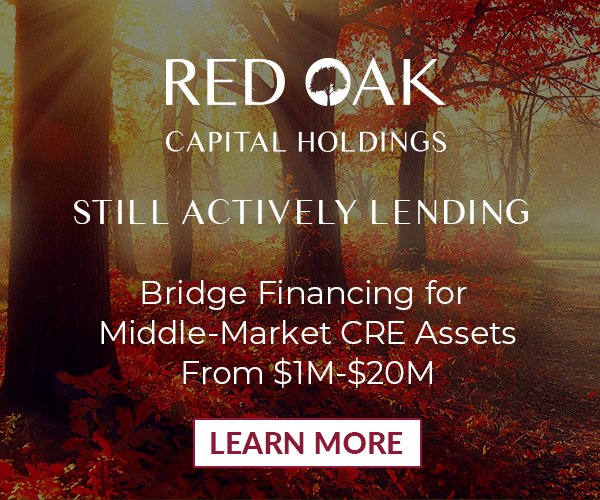Hospitality CRE News In Your Inbox.
Sign up for Connect emails to stay informed with CRE stories that are 150 words or less.

CRE Lenders and Borrowers Have Adjusted to Fed’s Higher-for-Longer Policy
To the surprise of pretty much no one, the Federal Reserve’s Federal Open Market Committee on Wednesday held the line on the federal funds rate, keeping it in the 5.25%-5.5% range where it has been since last July. Borrowers and lenders in commercial real estate have gotten used to this higher-for-longer Fed scenario and have developed workarounds, industry leaders told Connect CRE.
Adam S. Finkel, co-founder & managing partner at Tower Capital, said the CRE finance sector has shown “remarkable adaptability” amid rates that haven’t been this high since the early 2000s. “Both lenders and borrowers have had to recalibrate their expectations and strategies over the past several months,” he said.
Lenders have “adjusted their underwriting criteria to account for the elevated rate environment, focusing more on asset quality and borrower strength to mitigate risk,” said Finkel. “Borrowers, on the other hand, have become more strategic in their financing approaches, often opting for shorter-term loans with the flexibility to refinance when rates eventually decrease.”

Such recalibration is now evolving into lenders and borrowers “positioning themselves in a manner that allows them optionality should rates drop,” said Jonathan Lee, executive managing director, Colliers Structured Finance Group.
“For lenders, this means a push into floating rate products such as construction and bridge loans,” Lee continued. “This allows them to keep booking new loans, but with a margin over an index that buoys their profitability. For borrowers, all of our new permanent debt has been geared toward shorter terms, usually 3-5 years, with borrower-favorable step-down pre-payment schedules. Should the Fed pivot, this gives banks a chance to aggressively jump back into fixed rate debt and it allows borrowers the opportunity to lock in longer term fixed rate debt that meets their expectations for a nominal pre-payment.”
As a gauge of how the industry’s thinking has evolved, Eric Enloe, senior managing director at Partner Valuation Advisors, told Connect CRE, “When interest rates started to rise, borrowers were not willing to accept that asset value pricing had changed. A lack of sale transactions did not help substantiate that asset values had changed. Now, borrowers understand that asset values have changed (buyers have understood this for a while).
“However, we are now seeing select asset values increase,” Enloe continued. “Industrial would be an example of this, in that we have seen investment sales activity accelerate recently and the prices being paid and interest in the offerings has been robust. It is not an even recovery across property types, but we are seeing recent positive traction in industrial. Anticipation of future interest rate cuts is playing a role in this.”

Zachary Streit, president of Priority Capital Advisory, told Connect CRE, “Sentiment has changed considerably since earlier this year, when multiple rate cuts were expected. Business plans are also adjusting accordingly. We are seeing a significant increase in bridge financing requests from sponsors who do not want to lock in a permanent loan in the 6% to 8% all-in range today, although dependent upon asset class and sponsors that need additional time to execute their business plans.”
In the view of Adam Weissburg, partner at Cox, Castle & Nicholson, “The critical issue is not so much rate but curve stability. People are generally comfortable rates are not going up. That allows people to underwrite to the worst case. If good deals exist with sufficient capital, they can get done.”
As Streit pointed out, 2024 began with many anticipating multiple reductions in the federal funds rate as the year progressed. Following its June meeting, the FOMC indicated that we’ll probably see only one. In between January and June, the expectation for rate reductions dwindled from a high of six.
Accordingly, said Finkel, “The anticipation of fewer rate cuts in 2024 indicates that the current lending and borrowing landscape will persist for a longer period than initially expected. Meaningful change in the industry’s status quo is likely to hinge on clear signals from the Federal Reserve regarding a shift in monetary policy, which, in turn, will depend on broader economic indicators such as inflation, employment rates and GDP growth.”
With the current outlook, he continued, “it is reasonable to expect that any significant changes may not materialize until late 2024 or even into 2025. Until then, we can anticipate a continued focus on conservative lending practices and strategic borrowing.
“The market will remain cautious, with a heightened emphasis on maintaining liquidity and managing interest rate risk. However, as we approach the latter half of 2024, should the economic data support a dovish turn by the Fed, we might start to see gradual improvements in lending terms and a resurgence in borrowing activity, setting the stage for a more dynamic and growth-oriented market environment.”

Weissburg believes the degree of change we’ll see in the CRE financing status quo depends on product type. “For many, we need repricing of assets like office,” he said. “We are seeing that with a lot of foreclosures and deeds in lieu. Other stabilized products are choppy and we still need rate reduction.
He continued, “Some favored classes like multifamily are picking up momentum but still have a long way to go. Construction is picking up especially in multifamily and cold storage. But, as an industry, we are still grappling with regional banks pulling back since they were a driver of construction. The commercial real estate industry rebound is at early stages with stabilization of the markets and debt funds filling in capital needs. The good news, in my opinion, is we are starting to get upswing.”
Streit and his team believe the industry is already experiencing a change. “There are more conversations about lenders tightening the screws on borrowers and being less flexible on extensions and modifications, unfortunately,” he said. “This should precipitate an uptick in refinance activity and also some assets going REO that we believe will ultimately be sold. As a result, transactional activity in the finance markets will be higher in the back half of this year, and more so than last year.”
The longer rates stay the same, “the more the overall market accepts it as reality and will transact within its parameters,” Lee pointed out. “Many borrowers need to keep transacting to earn fees that keep their shops poised for the next growth swing. It is harder to take advantage of opportunities if you are culling staff. Fee-based shops realize that, and they continue to move forward.
“At the same time, lenders need to demonstrate viability or they lose market share” he continued. “I don’t think either side will be touting their profitability in 2024, but the most succinct way to put it is both sides are transacting in July the way they were talking about it in January. Transaction volume lagged for six months, but it is picking up momentum heading into Q3.”
Enloe predicted that going forward, “We will see an uptick in lending. Will it be back to 2021 levels? No chance. In 2021, the 10-year treasury was in the 1.50% range and now we are in the 4.3% range. Asset values had to go up in 2021 with the 10-year treasury at those levels and you saw capitalization rates in the 3.50% and 4.50% levels (and at times lower than that). As the entire real estate industry (investors, lenders, brokers, appraisers) have conviction on where asset values are at, you will see increased lending activity.“
At BGO, chief economist Ryan Severino thinks the Fed has already kept rates elevated for too long. “As we have vociferously argued, the Fed remains fixated on inflation measures that are lagged at best and incorrect at worst,” he wrote earlier this week. “This stems from the outsized share of rent in U.S. inflation indexes, relative to those of other G7 nations, specifically because of the inclusion of owned-housing ‘rent.’ No other G7 nation uses such a metric, even when they attempt to measure the cost of owning a home.“
Housing, Severino pointed out, “remains expensive almost everywhere in the developed world because of an acute housing shortage. In some G7 countries, housing is more expensive and is appreciating faster than in the U.S. Yet, only in the U.S. is expensive housing skewing inflation data.”
Pictured, from top: Adam S. Finkel. Jonathan Lee. Zachary Streit. Adam Weissburg.
- ◦Financing
- ◦Economy





